Simulation Standard
Silvaco面向半导体工艺和器件仿真工程师推出的技术刊物
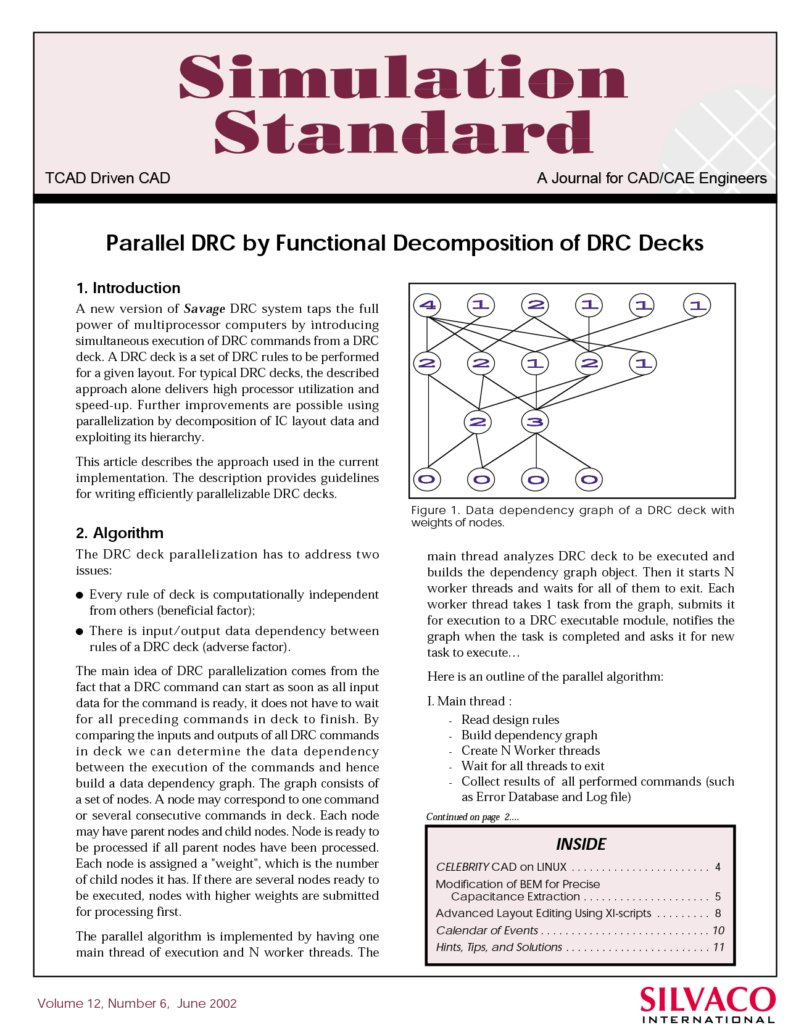
Parallel DRC by Functional Decomposition of DRC Decks
A new version of Savage DRC system taps the full power of multiprocessor computers by introducing simultaneous execution of DRC commands from a DRC deck. A DRC deck is a set of DRC rules to be performed for a given layout. For typical DRC decks, the described approach alone delivers high processor utilization and speed-up. Further improvements are possible using parallelization by decomposition of IC layout data and exploiting its hierarchy.
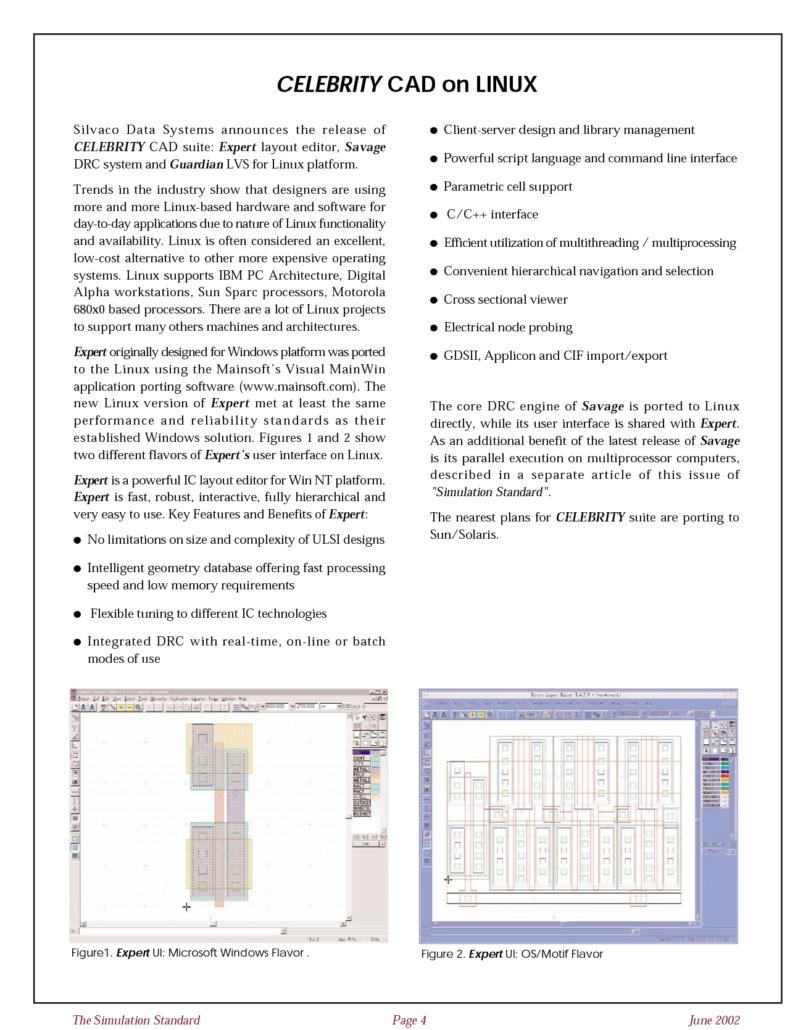
Expert Layout Editor, Savage DRC System and Guardian LVS for Linux Platform
Silvaco Data Systems announces the release of CELEBRITY CAD suite: Expert layout editor, Savage DRC system and Guardian LVS for Linux platform.
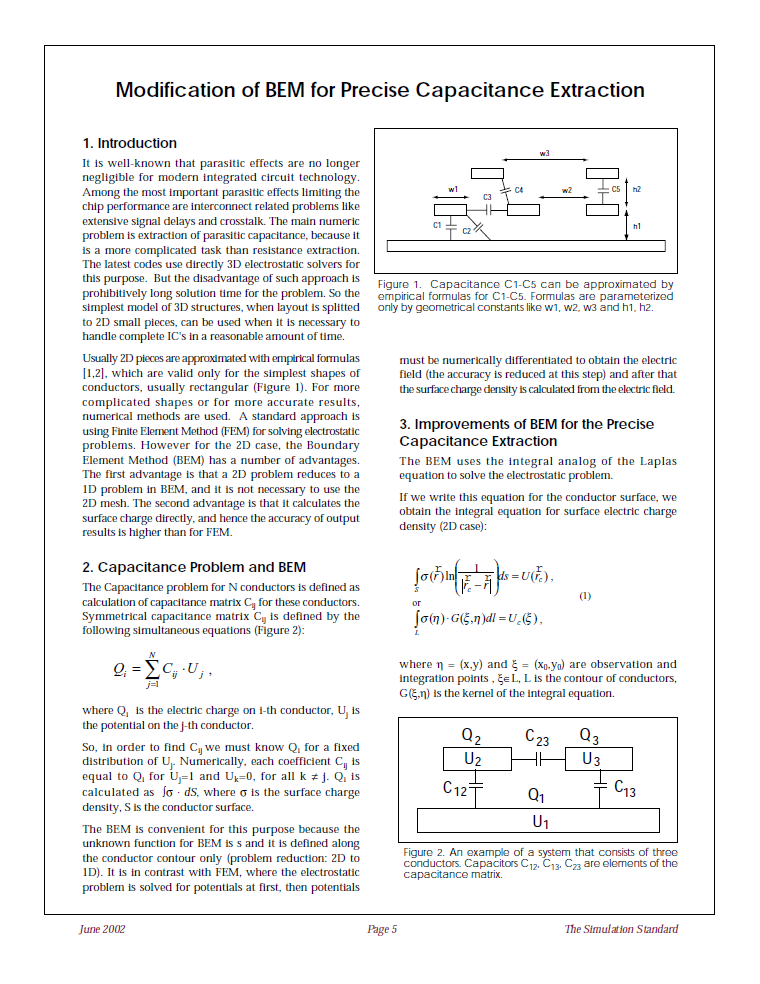
Modification of BEM for Precise Capacitance Extraction
It is well-known that parasitic effects are no longer negligible for modern integrated circuit technology. Among the most important parasitic effects limiting the chip performance are interconnect related problems like extensive signal delays and crosstalk. The main numeric problem is extraction of parasitic capacitance, because it is a more complicated task than resistance extraction. The latest codes use directly 3D electrostatic solvers for this purpose. But the disadvantage of such approach is prohibitively long solution time for the problem. So the simplest model of 3D structures, when layout is splitted to 2D small pieces, can be used when it is necessary to handle complete IC's in a reasonable amount of time.
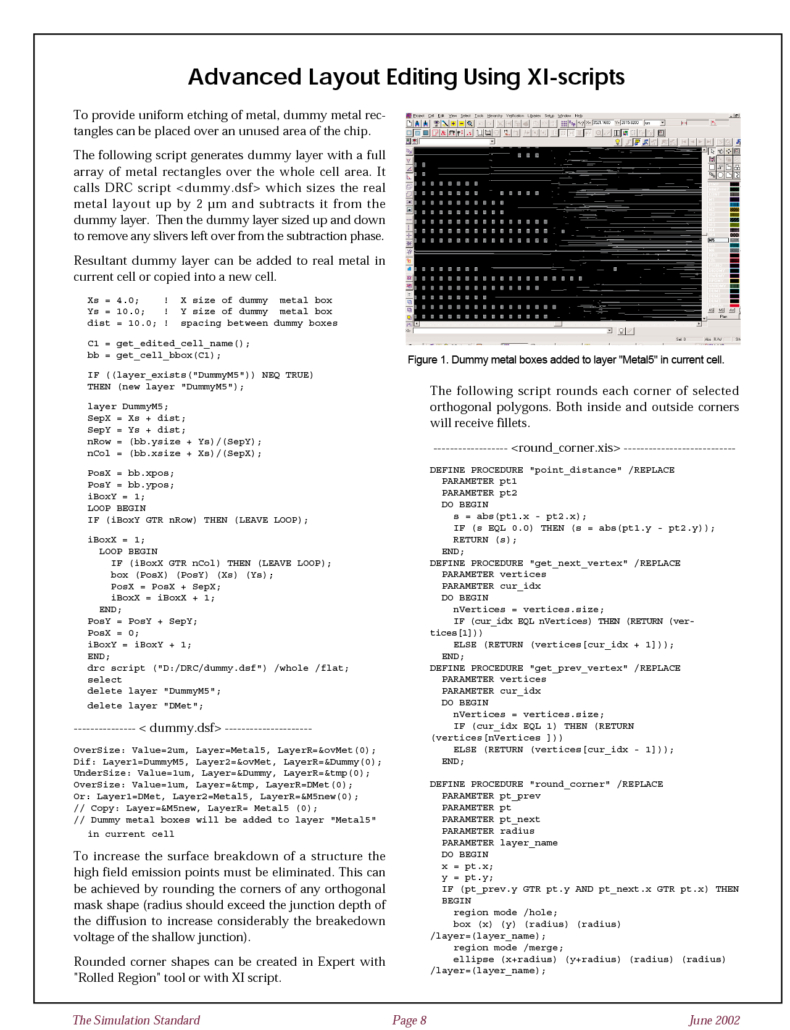
Advanced Layout Editing Using XI-scripts
To provide uniform etching of metal, dummy metal rectangles can be placed over an unused area of the chip. The following script generates dummy layer with a full array of metal rectangles over the whole cell area. It calls DRC script which sizes the real metal layout up by 2 µm and subtracts it from the dummy layer. Then the dummy layer sized up and down to remove any slivers left over from the subtraction phase.

Hints, Tips, and Solutions for Expert Layout Editor
Q: How can I cut exactly the same hole in many layers?
Q: How to skip a single layer during stream-out?
Q: How to do filler boxes in Expert?
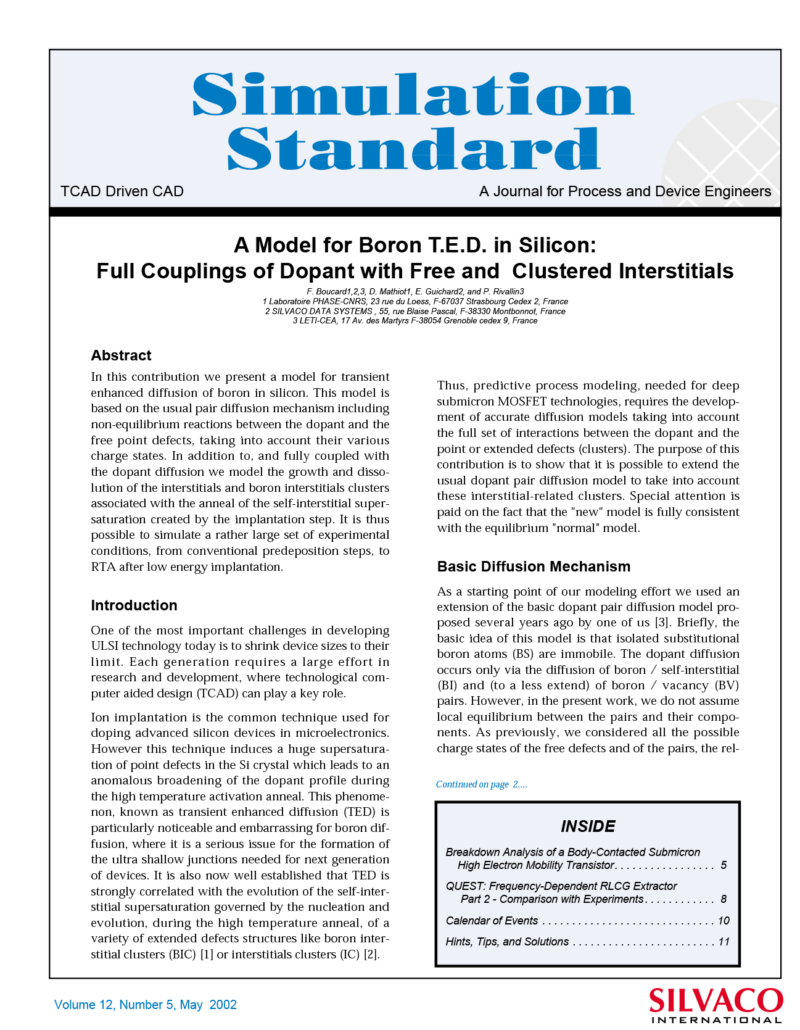
A Model for Boron T.E.D. in Silicon: Full Couplings of Dopant with Free and Clustered Interstitials
In this contribution we present a model for transient enhanced diffusion of boron in silicon. This model is based on the usual pair diffusion mechanism including non-equilibrium reactions between the dopant and the free point defects, taking into account their various charge states. In addition to, and fully coupled with the dopant diffusion we model the growth and dissolution of the interstitials and boron interstitials clusters associated with the anneal of the self-interstitial supersaturation created by the implantation step. It is thus possible to simulate a rather large set of experimental conditions, from conventional predeposition steps, to RTA after low energy implantation.

